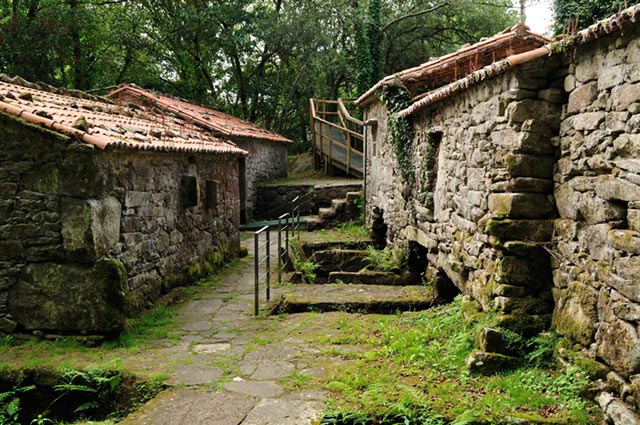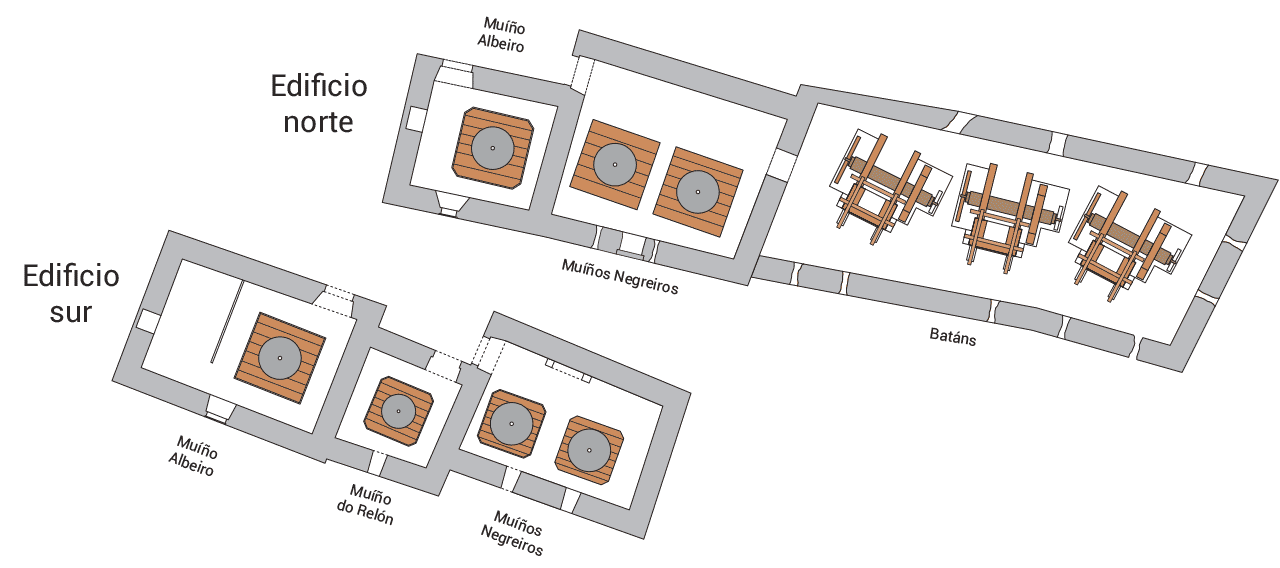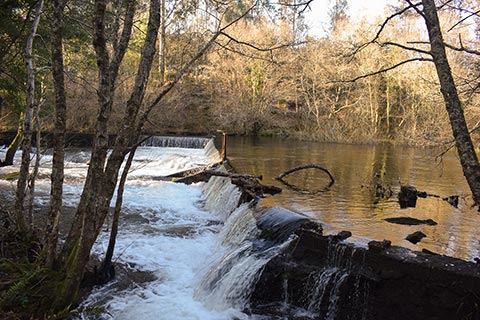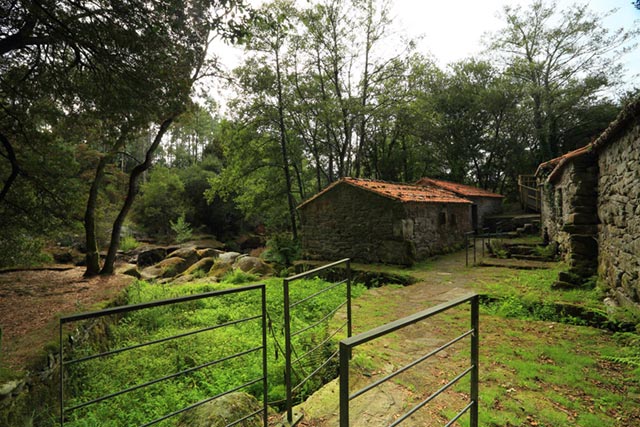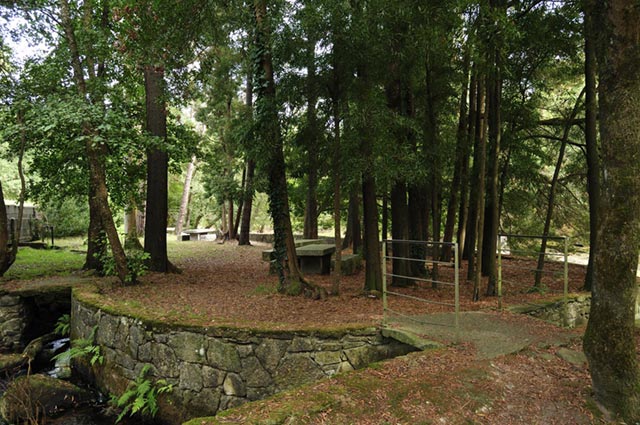The place of Mosquetín belongs to the parish of Salto, in the City council of Vimianzo. In this place of singular beauty we find the extraordinary set of fulleries and mills, right next to the Rio Grande, which flows into the Camariñas estuary. The water from this important fluvial current is the element that allowed them to operate for more than 250 years. On closer inspection we can see how they are two simple elongated constructions made of stone masonry and covered with tiles. The machineries used in the 7 mills and 3 fulling mills are inside.
The north building, which is closest to the road, is divided into three different rooms that each house an albeiro mill, to grind wheat, two negreiro or corn mills, and 3 fulling mills.
The south building, closest to the river, houses only mills, and is also divided into three spaces. In the first one there was an albeiro mill, in the next a relón mill (for bran) and in the third two more negreiro mills.
Both mills and fulleries used the dammed water from a dam located a short distance upstream. The water was then conducted through channels to move the wheels that operated the mills’ machinery.
From the information surrounding these buildings we know that they were in operation from at least the eighteenth century until the year 1966 and was used by many inhabitants in the area who brought their blankets for pummeling or their corn and wheat to grind into flour.
The surroundings are currently enhanced by a recreational area located right next to the Rio Grande and next to the ethnographic ensemble, with shady areas and stone tables for visitors to use.


